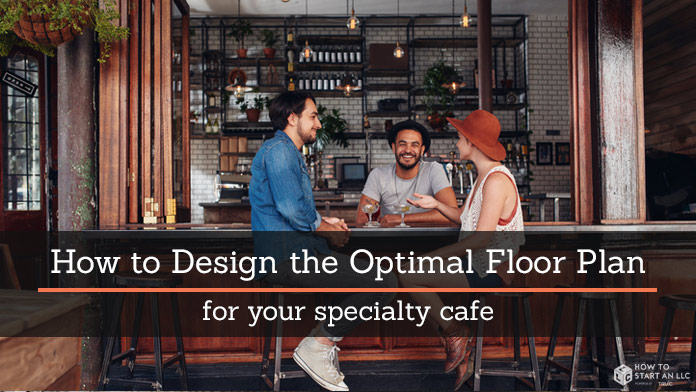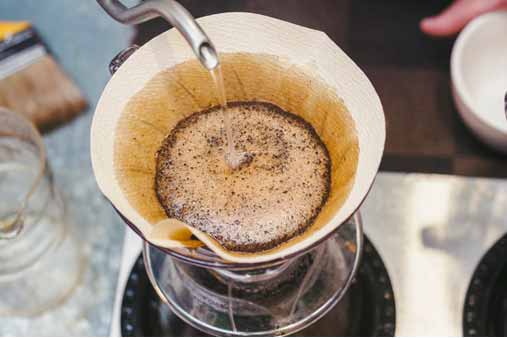Designing the Perfect Floor Plan for Your Cafe
If you’ve ever worked in a cafe, you already know the importance of a smart build-out. It’s the foundation that empowers you and your employees to deliver an amazing experience for customers again and again. But how do you create an efficient, yet visually appealing workspace in your coffee shop?
In this guide, we'll go over the core elements you should consider when designing a floor plan for your specialty cafe.
Recommended: Read our full, in-depth How to Start a Coffee Shop Business guides, inspired by coffee professionals, they will help make your coffee dreams real, from sourcing beans to hiring baristas, forming an actual company, and everything in between.

5 Steps to Plan the Perfect Cafe Floor Plan
Step 1: Equipment Placement
Commercial coffee equipment is bulky. That means where you place your espresso machine will impact the relationship your baristas have with customers and how those customers engage with your product. For example:
- If you want to enable your baristas to talk with customers while making drinks, ensure the back of your machine faces the customer.
- If you want customers to be able to watch a barista make their drink, align the espresso machine so its side faces the customer. This will give them a full view of your skillful staff at work.
- If you bought a truly beautiful piece of equipment and want to show it off, position the front of the machine toward the customer. Be aware, though, that this placement can decrease your baristas’ ability to engage with customers.
Step 2: Counter Space
How you use the counter space in your shop often impacts the efficiency of your daily operations. Be sure to allocate ample room for your larger pieces of equipment, including your espresso machine, drip coffee maker(s), and espresso and drip coffee grinders.
You’ll also need space for baristas to prepare drinks with syrups and any other items necessary to this process as well as for manual brew methods, a knock box, food preparation, food displays (e.g., for pastries and any other items you plan to sell), a POS System, a “specials” board, and a pick-up area for drinks.
Step 3: Employee Workflow
A logical, efficient workflow should inform decision-making about your build-out. Consider each step a barista must take to complete an order and map out a path with the fewest steps possible. Where you place your milk fridge, espresso machine, coffee grinders, and pitcher rinser can either enhance or hinder the efficiency of your staff. For example:
Ensure all of the elements to make a drink are within easy reach of your barista(s).
Store plates or takeout bags next to your pastry and/or food displays to enable staff to deliver those items to customers quickly while a barista makes their drink.
Place coffee grinders next to your espresso and drip coffee machines to minimize your baristas’ required steps during the busiest rush times.
Step 4: Menus and the Ordering Process
When customers enter your coffee shop, you want them to have an intuitive, stress-free experience. That requires careful planning as you develop your menu and decide where customers will place orders to ensure an efficient process. For example:
- Carefully consider your customers’ experience when building your menu. Be sure to convey your offerings clearly — especially any items unique to your shop, such as alternative milks and syrups.
- Be careful of only having one small menu in front of the register, customers won’t have the opportunity to consider their options before they reach the front of the line. As a result, they may face pressure from a barista — and customers behind them — to quickly make a decision. Display a large menu on a wall or hang it from your ceiling instead.
- Clearly communicate to customers — via signage and your staff — where customers should place orders and if they must pick up their own drinks or if an employee will bring it to them.
Pro Tip: As you develop your menu, consider creating separate menus for your food and beverage offerings to keep each menu clear and concise.
Step 5: Brand Alignment
Another important aspect of branding your cafe is how you bring your brand to life in your physical space. If, for example, your brand focuses on using organic and natural products, consider integrating natural elements like large plants into your cafe design.
By ensuring your physical space embodies your brand, you enable customers to engage with the full vision of your shop and, most importantly, understand your business ethics and style.
If you still need help with getting a logo for your cafe, try branding your small business with our Free Coffee Shop Logo Maker! It doesn't require any personal information and you can download as many logos as you like until you find the perfect match for your business.
Wrapping Up
Once you finalize an optimal build-out plan for your coffee shop, it's time to consider your roasting needs. We encourage you to check out the next article in this series, To Roast or Not To Roast: Deciding for Your Cafe.


